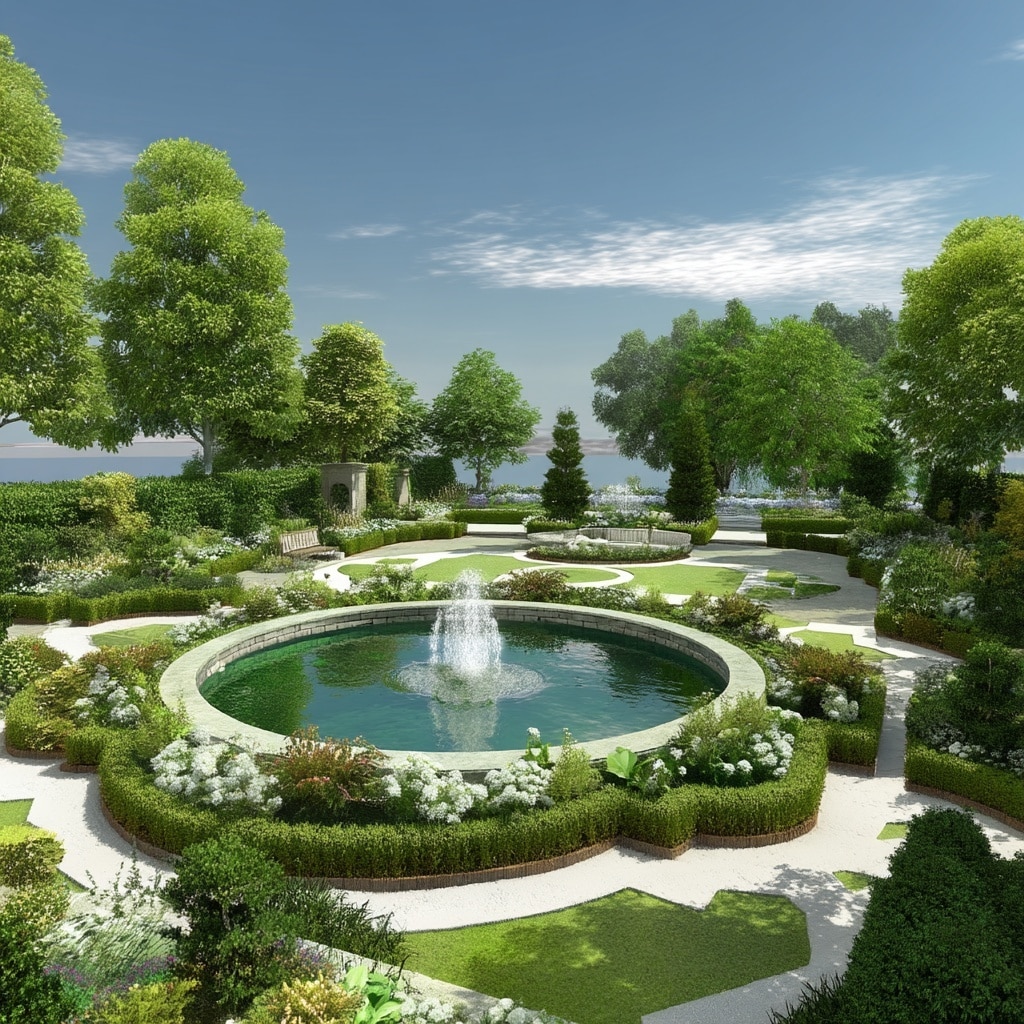Landscape design ideas are the foundation of creating an outdoor space that feels both beautiful and purposeful. Whether you’re working with a small urban yard or a sprawling suburban garden, introducing thoughtful design helps your outdoor area become an extension of your home. In this article, you’ll learn how to approach your landscape with fresh, manageable concepts—from basic guiding principles to practical application—so you can craft a space that reflects your style and functions beautifully.
Table of Contents
6 Basic Principles of Landscape Design
Understanding these essential principles will help you generate balanced and cohesive landscape design ideas for any space—whether you’re arranging flower beds, planning pathways, or shaping a backyard retreat.
1. Proportion
Proportion refers to the relationship between elements—plants, trees, patios, and structures—within your landscape. Keep sizes in harmony so that no single feature feels overwhelming. For example, a small courtyard should feature compact trees or shrubs, while a large lawn can handle taller hedges or a statement pergola.
2. Transition
Smooth transitions guide the eye naturally through the garden. Gradual height changes between shrubs, trees, and flowers create visual flow, while blending colors and textures helps the entire space feel unified rather than abrupt or disconnected.
3. Unity
Unity ties all parts of your landscape together through repetition, color themes, and consistent materials. For example, using the same edging stone around your flower beds and pathways maintains a cohesive look. Balanced repetition of shapes or colors also strengthens unity.
4. Rhythm
A landscape with rhythm feels alive and dynamic. This can be achieved by repeating patterns or planting arrangements at measured intervals—like alternating tall grasses and flowering perennials along a pathway. This technique creates gentle movement and harmony as you walk through the garden.
5. Balance
Balance gives your outdoor space visual stability. It can be symmetrical—with mirrored elements on both sides of a walkway—or asymmetrical, where different but equally weighted objects, like a large tree balanced by a low garden bench, still feel harmonious.
6. Focalization
Every landscape benefits from a focal point. A water fountain, fire pit, sculpture, or large flowering tree can serve as a visual anchor that draws the eye. When using multiple focal points, keep them proportional and placed strategically to maintain flow.
Types of Landscapes
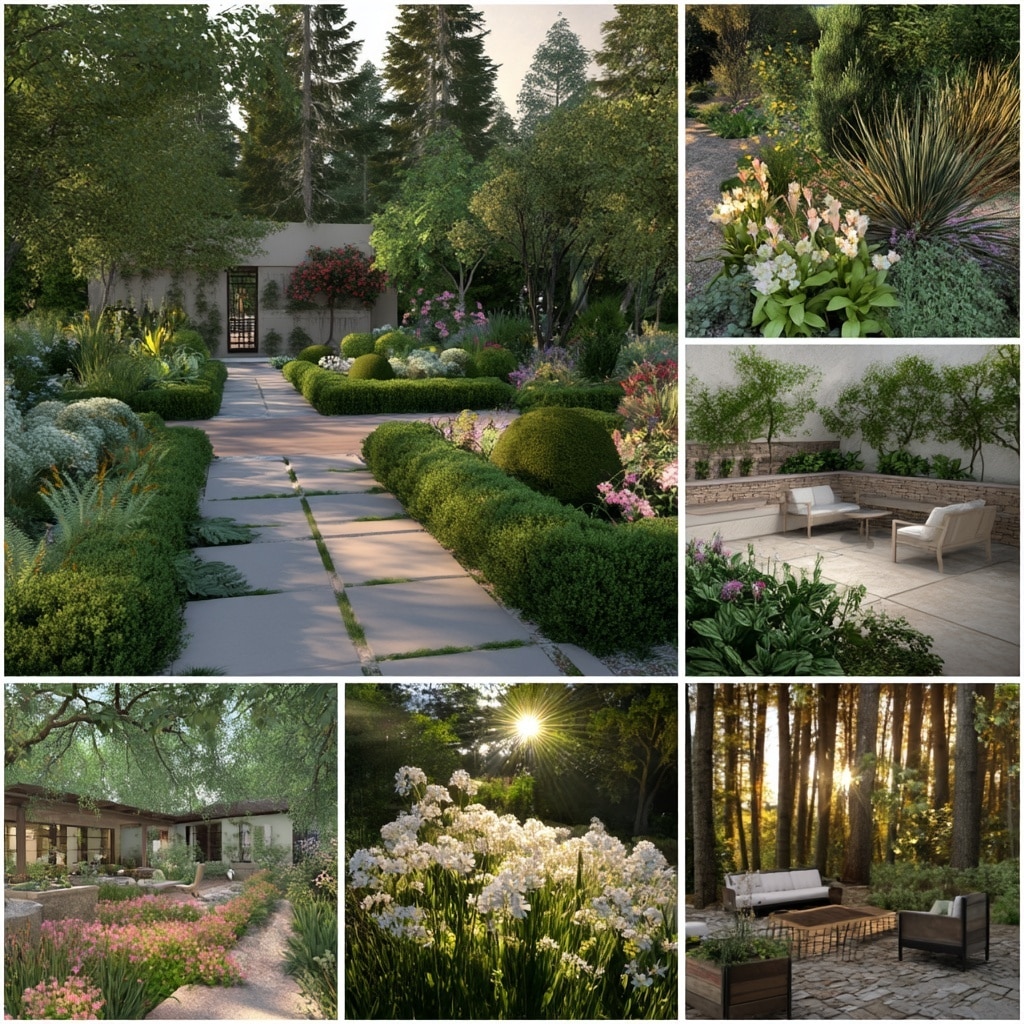
Before applying your landscape design ideas, it’s helpful to understand the main landscape styles. Each type offers a unique aesthetic and mood—so choose one that complements your home, climate, and personal taste.
1. Formal Landscape
Formal landscapes emphasize symmetry and structure. Think straight lines, clipped hedges, evenly spaced plants, and geometrically shaped flower beds. This style works best for traditional homes or those who prefer a polished, orderly garden look.
2. Informal Landscape
Informal landscapes have a relaxed, natural feel. Curved pathways, asymmetrical plant placement, and varied textures make the space inviting and easygoing. It’s ideal for families or anyone who enjoys a softer, more organic appearance.
3. Modern Landscape
Modern designs focus on clean lines, minimalism, and function. Features like concrete planters, sleek metal edging, and drought-tolerant plants keep maintenance simple while maintaining a contemporary vibe.
4. Cottage Garden
If you love charm and color, a cottage garden is full of whimsical landscape design ideas. Dense flower beds filled with perennials, climbing vines, and rustic stone paths create a romantic, storybook setting.
5. Xeriscape
Perfect for dry climates, xeriscaping relies on drought-resistant plants and efficient irrigation systems. Gravel beds, succulents, and native plants reduce water use while keeping the garden stylish and sustainable.
6. Woodland Landscape
This design mimics a natural forest setting with shade-loving plants, mossy paths, and layered tree canopies. It’s low-maintenance and eco-friendly, making it ideal for homes with existing mature trees.
How to Design a Landscape
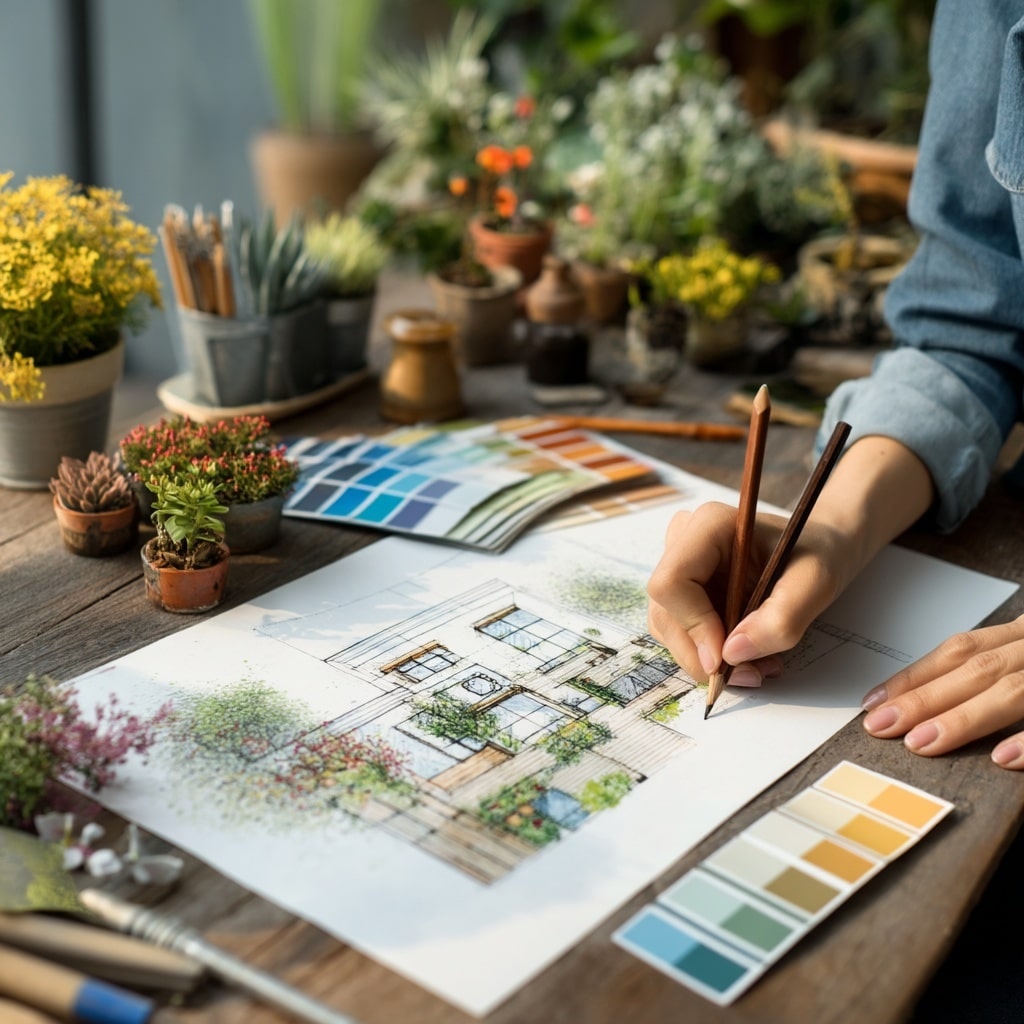
Now that you’ve seen different styles, it’s time to put your landscape design ideas into action. Designing a landscape means blending creativity with structure—combining shapes, colors, and textures to create balance and flow throughout your space.
1. Color
Color sets the mood of your garden. Warm hues like reds, oranges, and yellows bring energy and excitement, while cool shades such as blues, greens, and purples promote calmness. Combine seasonal colors for a fresh look year-round—think bright tulips in spring and golden mums in fall.
2. Form
Form defines the overall shape and outline of your garden elements. Rounded bushes, upright trees, or cascading vines all contribute to visual diversity. Mix contrasting forms—like vertical evergreens beside low, round shrubs—to create structure and dimension.
3. Texture
Texture adds tactile and visual depth to your landscape. Combine fine textures (like ferns or grasses) with coarse ones (like hostas or succulents) for appealing variety. Different textures catch light differently, helping to bring life and contrast to your garden.
4. Line
Lines guide movement and direct the eye. Curved lines create softness and flow, while straight lines add order and symmetry. Use pathways, hedges, or flower bed edges to form lines that subtly organize your space and invite exploration.
5. Scale
Scale ensures everything feels balanced. Larger plants or features should complement—not overpower—smaller elements. For example, a tall hedge behind mid-sized shrubs and a low flower border creates depth and natural layering.
When combining these principles, sketch a simple plan before planting. Visualizing your ideas helps ensure that each element works together for a cohesive and inviting design.
Landscape Design Costs
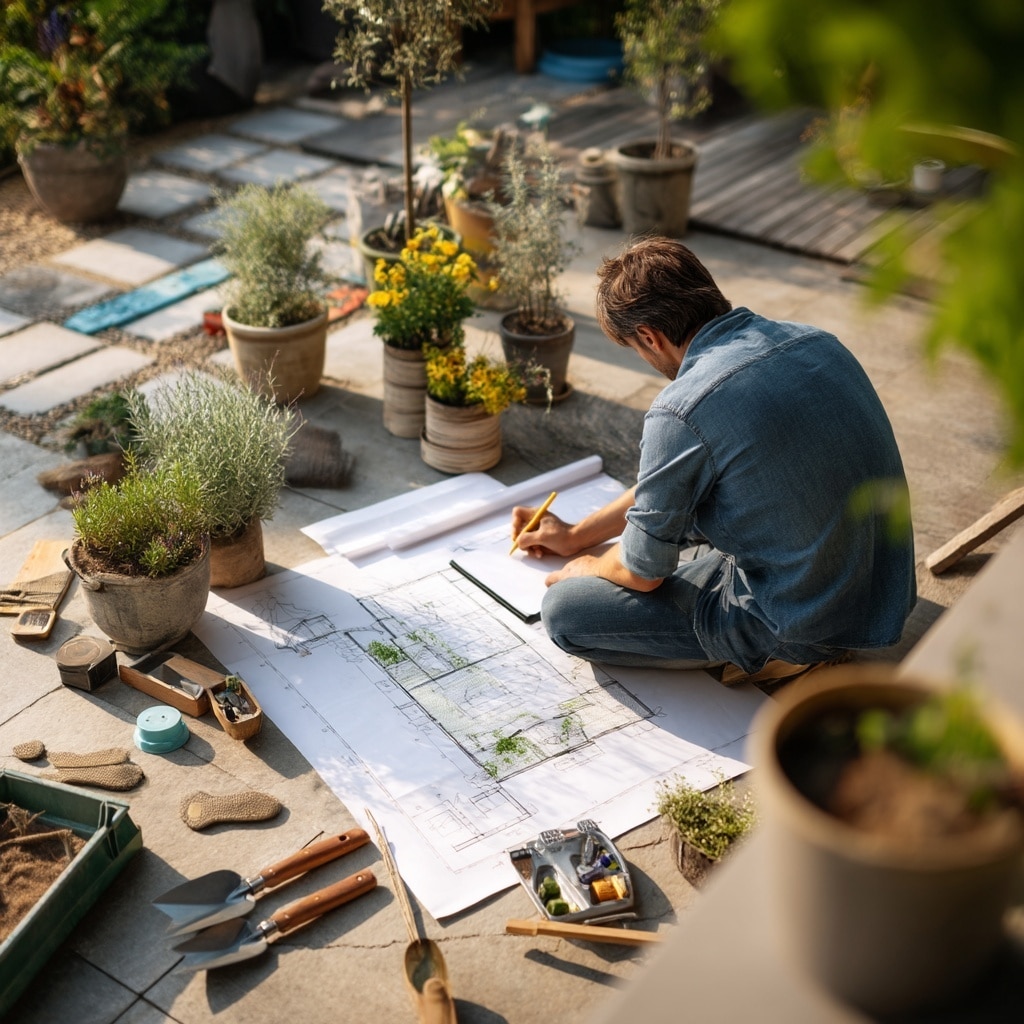
Before finalizing your landscape design ideas, it’s essential to understand how much your dream garden might cost. The total expense depends on the size of your yard, the complexity of your plan, and whether you’re hiring professionals or taking the DIY route.
1. Professional Design Services
Hiring a landscape designer can cost anywhere from $500 to $5,000 or more, depending on the scope. A simple front yard sketch may cost less, while full-scale designs with 3D renderings or lighting plans cost more. Professional help ensures balance, plant compatibility, and long-term sustainability—especially for complex layouts.
2. DIY Landscaping
If you prefer hands-on projects, DIY landscaping can save money. Costs typically include plants, soil, mulch, pavers, edging, and tools. Budget $2 to $10 per square foot for basic improvements. Many homeowners start small—adding a garden bed, installing a stone path, or creating a focal point—then expand season by season.
3. Ongoing Maintenance
Maintenance is an often-overlooked expense. Watering systems, fertilizers, pruning tools, and lawn care can add up over time. Choosing native and low-maintenance plants helps reduce these costs while keeping your garden vibrant year-round.
4. Sustainable Additions
If you’re eco-conscious, consider long-term investments such as drip irrigation systems, rainwater collection barrels, or solar-powered lighting. Though the upfront cost may be higher, these features can lower water and energy bills over time.
A thoughtful budget ensures your landscape vision grows sustainably—both aesthetically and financially.
Landscape Design Inspiration and Examples
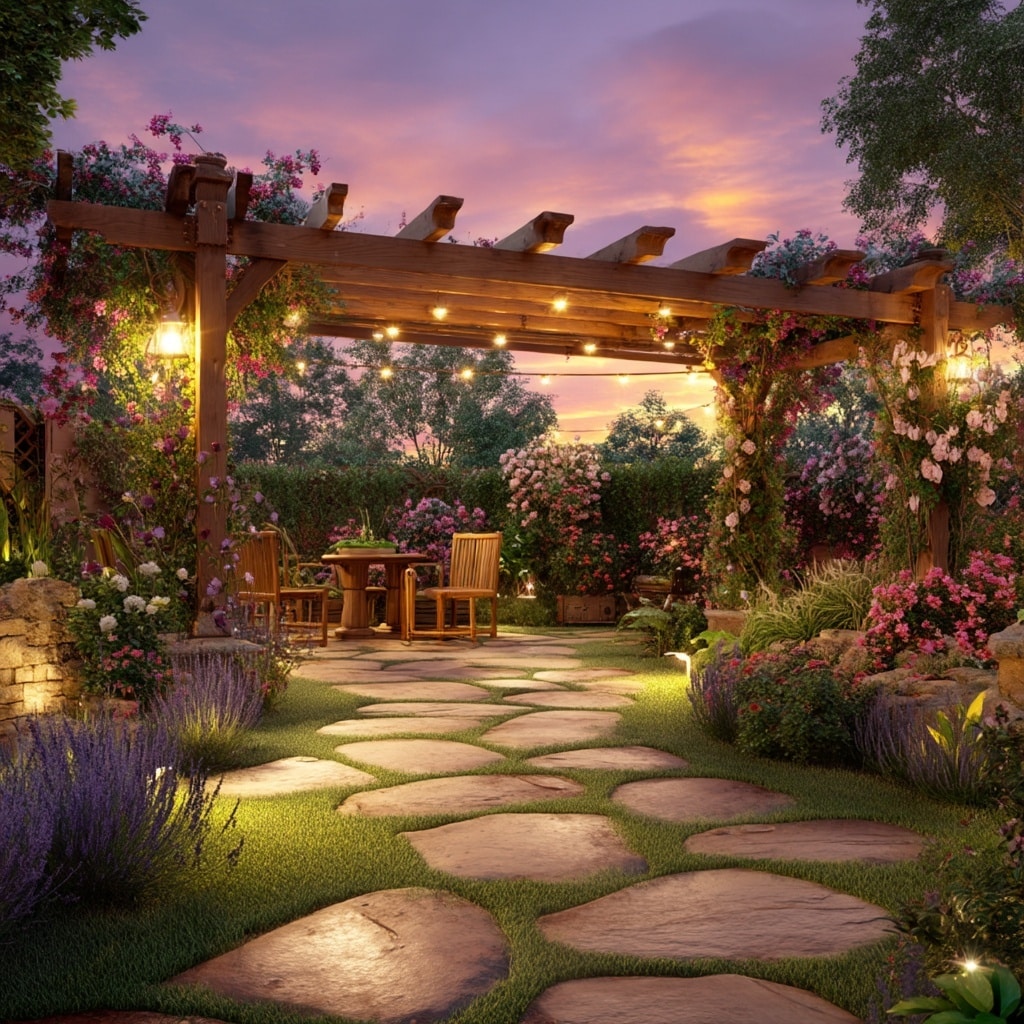
Bringing your landscape design ideas to life often starts with visual inspiration. Seeing how color, texture, and structure come together in real gardens helps you imagine what’s possible for your own outdoor space.
1. Front Yard Makeovers
Transforming a plain front yard can dramatically boost your home’s curb appeal. Combine symmetrical flower beds, a curved walkway, and a small seating area for a warm, welcoming feel. Add layered lighting along the path to highlight plants and architecture at night.
2. Backyard Retreats
Your backyard is your private escape. Blend greenery with comfortable furniture and cozy lighting. Consider a stone patio surrounded by shrubs and ornamental grasses, or a pergola draped in climbing roses for a serene outdoor dining space.
3. Small-Space Gardens
Even a tiny patio or balcony can showcase great landscape design ideas. Use vertical planters, hanging baskets, and compact furniture to make the most of limited areas. Group pots in odd numbers for visual balance and variety.
4. Water and Fire Features
Incorporate focal elements like a small pond, bubbling fountain, or fire pit to create ambiance. These features add movement and sound, transforming your garden into an inviting, sensory-rich environment.
5. Seasonal Highlights
Design your garden to shine in every season. Plant spring bulbs, summer annuals, fall foliage, and winter evergreens to ensure color and interest all year long. This layered approach keeps your space alive and ever-changing.
Conclusion
Building a beautiful outdoor space begins with practical landscape design ideas that reflect both style and function. Whether you prefer structured symmetry, natural flow, or a modern minimalist look, every yard can become a personal retreat with thoughtful planning. Start small—plant a few perennials, shape a pathway, or add a water feature—and watch your landscape grow into a space that feels truly your own.



